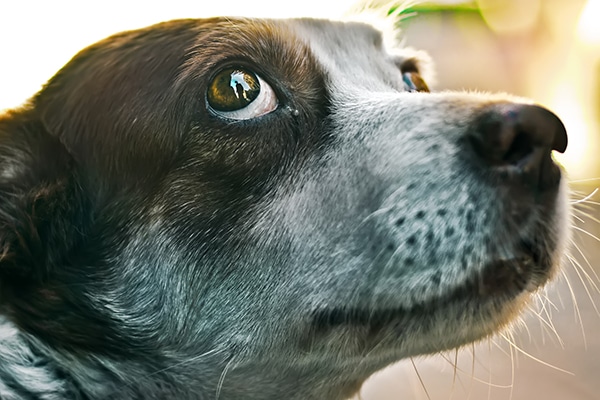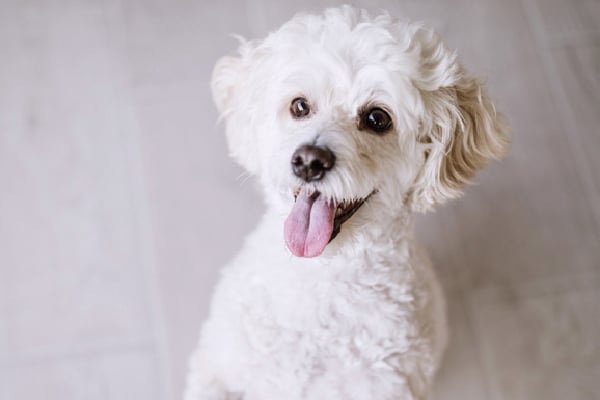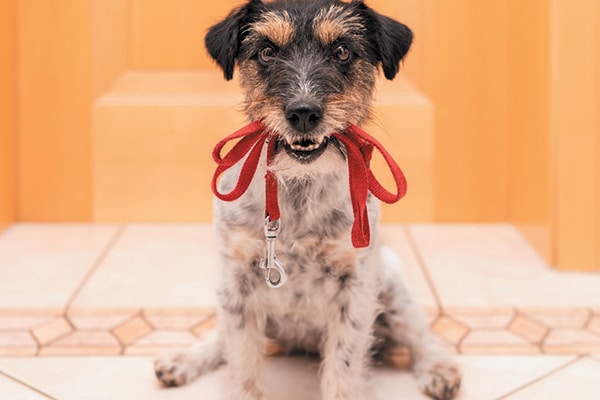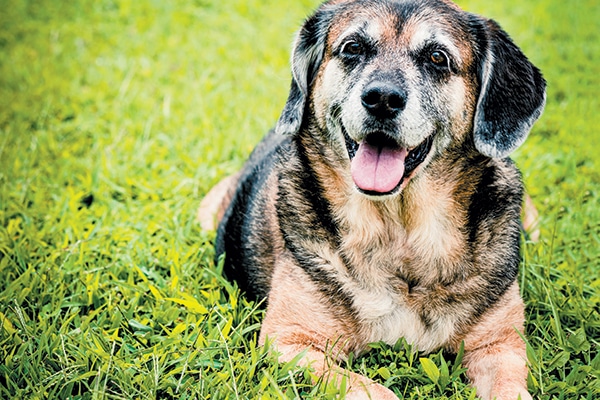The post My Dog Stares at Me — Is That Normal? by Elizabeth Vecsi appeared first on Dogster. Copying over entire articles infringes on copyright laws. You may not be aware of it, but all of these articles were assigned, contracted and paid for, so they aren’t considered public domain. However, we appreciate that you like the article and would love it if you continued sharing just the first paragraph of an article, then linking out to the rest of the piece on Dogster.com.
Learning to understand your dog’s body language is a vital way to strengthen the human-animal bond. Your dog uses his tail, his ears, his posture and his eyes to send various — and sometimes very subtle — messages that can signal happiness, fear, arousal, etc. Still you might ask: What does it mean when my dog stares at me?
Dog Staring May Indicate Fear or Stress

A dog staring with whale eyes indicates tension. Photography ©sadetgr | iStock / Getty Images Plus.
The first step to finding an answer when thinking “Hmm, my dog stares at me …” is to note the type of staring in question. The answers to “My dog stares at me — why?” can, unfortunately, point to tension, fear or stress.
When looking at your dog’s eyes, pay close attention to the white part of the eye (called the sclera) and the level of intensity of the gaze. When a dog is feeling tense, his eyes may appear rounder than normal or they may show a lot of white around the outside (commonly referred to as “whale eye”).
Soft and relaxed eyes, coupled with a relaxed body, indicate a calm and happy dog. A relaxed dog will often squint, so that his eyes become almond-shaped with no white showing at all. On the other hand, hard eyes with a hard stare are often a threat. Dilated pupils can also be a sign of either fear or arousal, contributing to a “glassy” look that indicates fear or stress in the dog.
Dog Staring and the Dog Language of Love

Dog staring also has positive connotations. Photography ©Pekic | Getty Images.
So, are the answers to “My dog stares at me — why?” ever positive ones? Yes. Studies show eye contact between humans can strengthen their bond, and canine-related research at the Yale University Center for Canine Cognition indicates a similar phenomenon associated with oxytocin (widely regarded as the “love” hormone).
“Looking into one another’s eyes can increase hormones associated with social bonding,” says Laurie Santos, director of the Yale University Center for Canine Cognition. Japanese researchers have found that the look shared between owner and dog can activate that same hormonal bonding response. (This was published in the journal Science in 2015.)
Of the dog-owner teams that spent the most amount of time staring at one other, the dogs experienced a 130 percent rise in oxytocin levels, whereas owners saw a 300 percent increase, according to the study.
Interestingly, wolves — who rarely engage in eye contact with their human handlers — seem resistant to the effect of oxytocin.
Experts believe that this eye-to-eye bond lets your dog interact with you in a way that has helped him through evolution to become man’s best friend. Dogs can focus on where you point, anticipate your intentions and also seem to be able to read your moods at times.
Other Types of Dog Staring

A dog staring at you could just be looking for a walk! Photography ©K_Thalhofer | Getty Images.
Exactly as a look between two humans can contain different emotions, the same can be said about a dog. Assessing the reasons behind “my dog stares at me” does not always point to love and affection, or fear and stress. Sometimes, your dog is simply staring at you because he needs to get outside for a potty break or even because you’ve just done something unusual and interesting!
Staring in Old Dogs

A senior dog staring at nothing could be a cause for concern. Photography ©CatLane | Getty Images.
So, for the majority of healthy dogs, “my dog stares at me” is a perfectly normal observation for a dog parent to make. But if a senior dog spends long periods of time staring at walls or into space, this could indicate canine cognitive dysfunction (CCD). This severe, thought-processing disorder is similar to Alzheimer’s disease in humans and is considered a form of senility or dementia in dogs.
If the staring appears alongside a number of other CCD symptoms — getting lost in familiar places around the home, not responding to his name or basic commands, trembling or wandering aimlessly around the house — promptly make an appointment with your veterinarian for a physical and neurological exam.
While less than two percent of older dogs are clinically diagnosed with “dog dementia,” some experts believe that CCD in dogs may be highly under-diagnosed. A study in The Veterinary Journal determines that it may, in fact, be as many as 14 percent of dogs over the age of eight years old. Because dog owners aren’t always aware of the symptoms, they may remain unreported to the veterinarian.
While there is no cure for CCD, a vet may be able to offer ways you can help your dog cope with it. And if your dog does not have CCD, know that his dog staring is likely just a show of his affection and deep connection with you.
Thumbnail: Photography ©damedeeso | Getty Images.
Read more about dog behavior on Dogster.com:
The post My Dog Stares at Me — Is That Normal? by Elizabeth Vecsi appeared first on Dogster. Copying over entire articles infringes on copyright laws. You may not be aware of it, but all of these articles were assigned, contracted and paid for, so they aren’t considered public domain. However, we appreciate that you like the article and would love it if you continued sharing just the first paragraph of an article, then linking out to the rest of the piece on Dogster.com.
No comments:
Post a Comment